This post may contain affiliate links. For more information, please see our affiliate policy.
This Orange Marmalade recipe is made with ordinary oranges and lemons, and it’s as unfussy as it is delicious. It follows the “old fashioned” technique of sitting in a pot overnight, and every spoonful will make your morning toast sparkle.
This recipe makes about 3 quarts total, or 12 (8 ounce jars). It freezes beautifully or you can process it in a water bath for canning.
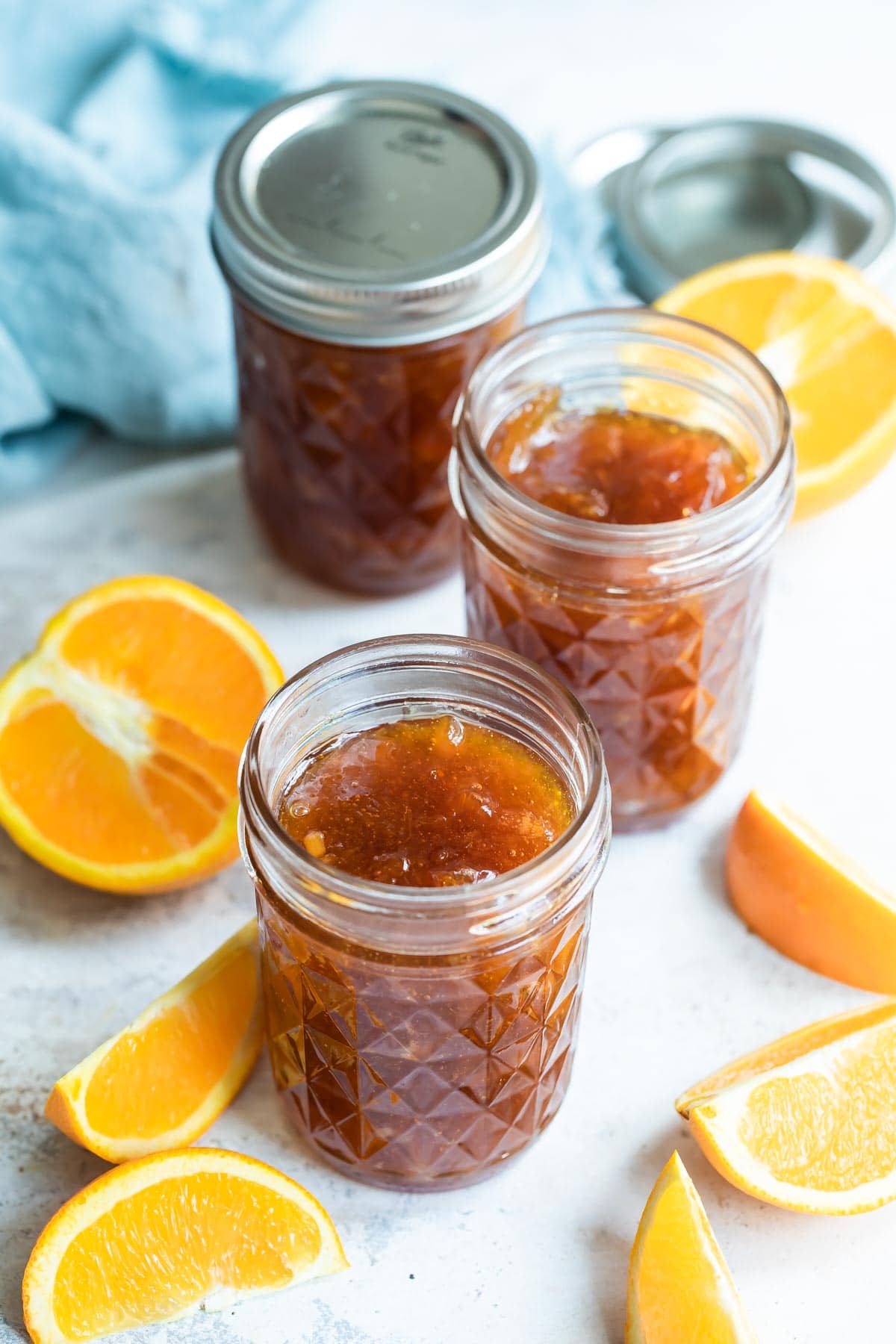
If you find yourself lucky enough to have a bounty of oranges (or other citrus fruits like grapefruit), this easy Orange Marmalade recipe is the one to make.
While many jam and jelly recipes require added pectin, you don’t need to add any to this marmalade. Pectin is naturally concentrated in the white pith of the orange (the bitter white part under the peel). This recipe coaxes out that natural pectin by letting the citrus soak overnight and then boiling it rapidly until enough water has evaporated that the mixture can reach 220 degrees.
We use a combination of orange and lemon slices here for the best taste. There is no need to remove the zest with a vegetable peeler. After soaking the citrus slices in sugar and boiling water, turn off the heat and let the pot sit overnight. The next day, turn the heat back on and boil the marmalade. It’s that easy!
Table of Contents
Recipe ingredients
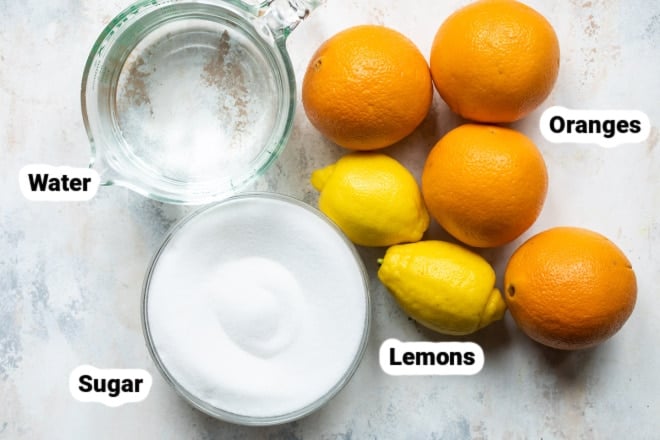
At a Glance: Here is a quick snapshot of what ingredients are in this recipe.
Please see the recipe card below for specific quantities.
Ingredient notes
- Oranges: This recipe is made with regular seedless oranges. You can definitely substitute Seville oranges if you can find them. They are only in season from the end of January to mid-February, but they have an intense flavor that is ideal for marmalade.
Step-by-step instructions
- Using a sharp knife, cut oranges and lemons in half crosswise, then into very thin half-moon slices. Discard any seeds. In a large pot (stainless steel), add the sliced oranges, lemons, and any fruit juice.
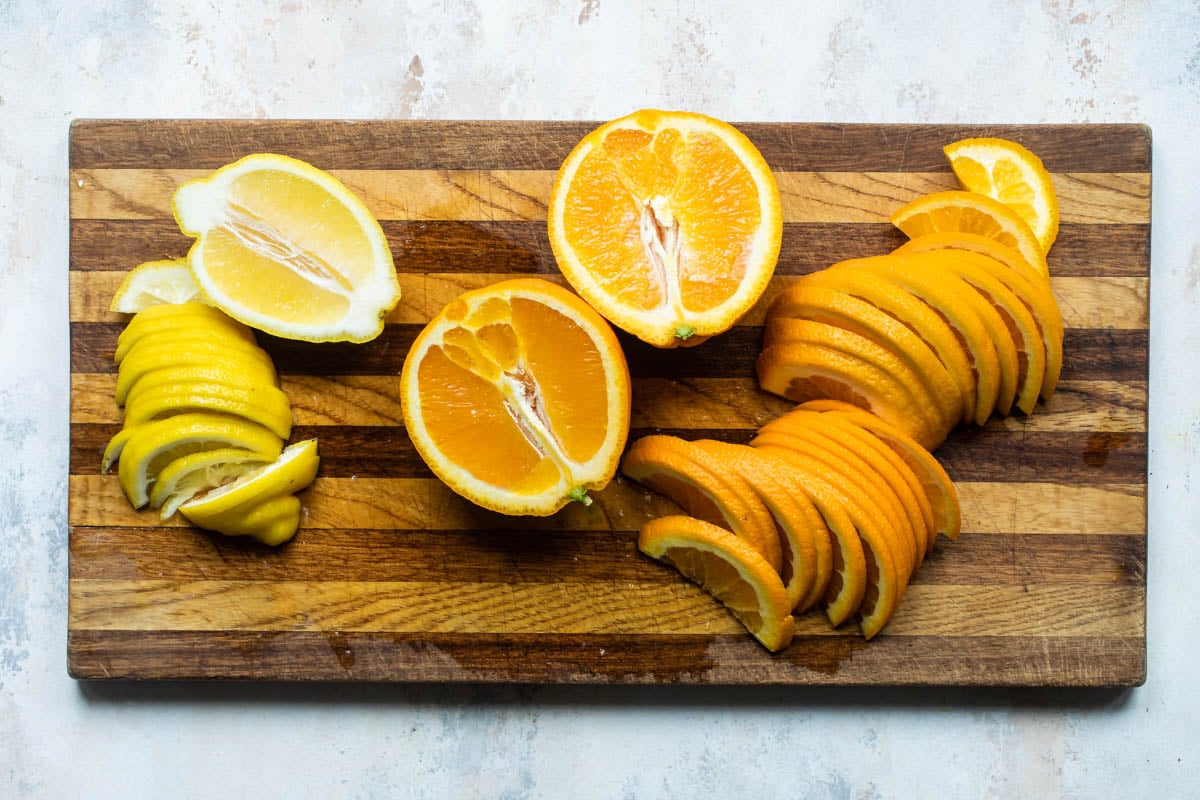
- Add water and bring the mixture to a boil over medium heat, stirring often. Remove from the heat and stir in the sugar until it dissolves. Cover and let stand overnight at room temperature.
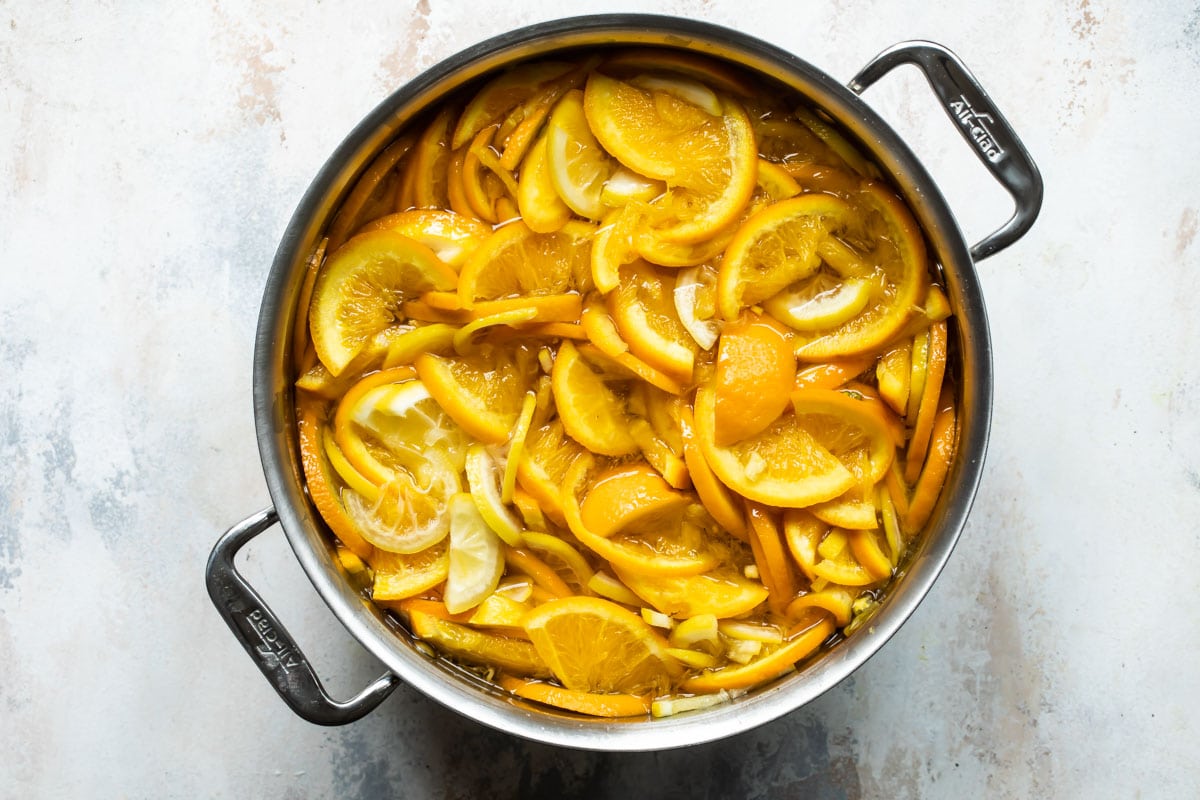
- The next day, bring the mixture back to a boil in the pot or saucepan. Reduce heat to low and simmer uncovered for 2 hours. Turn heat up to medium and boil gently, stirring often, for another 30 minutes. Skim off any foam that forms on the top. Cook the marmalade until it reaches 220 degrees on a candy thermometer (you must hit this temperature for the natural pectin to gel with the sugar).
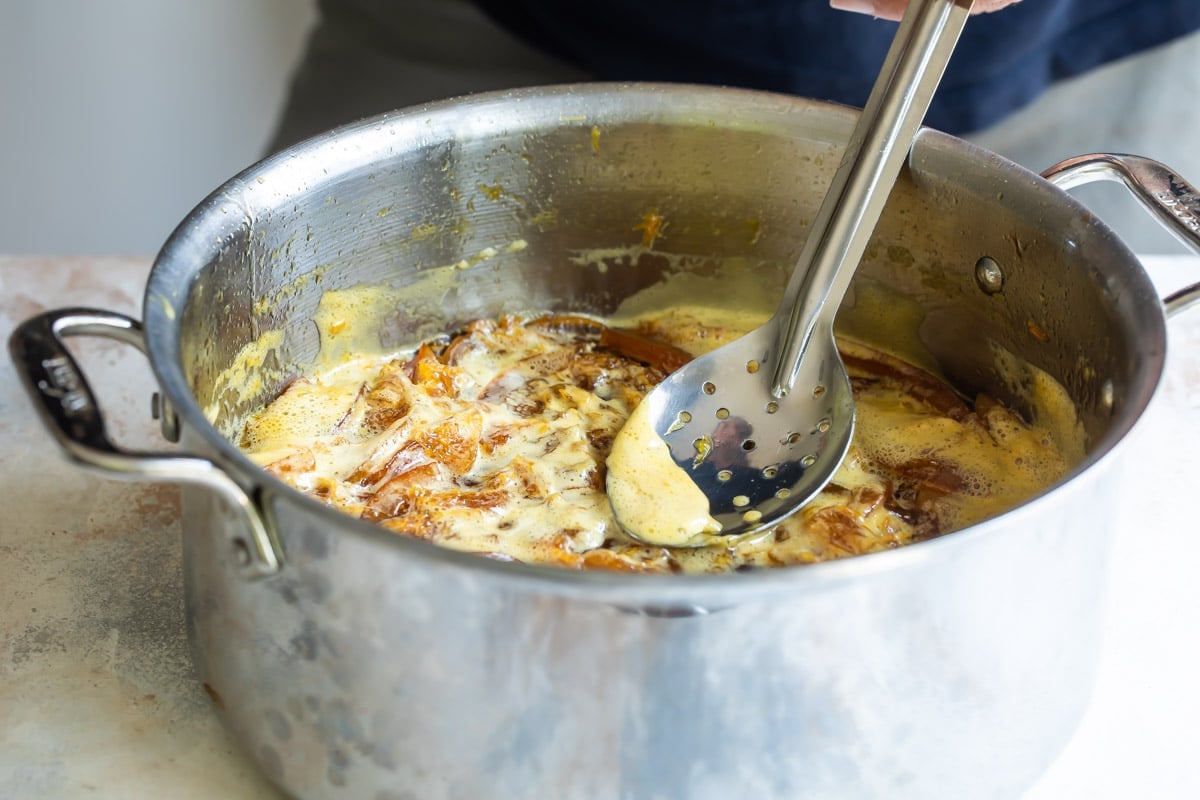
- To test if the marmalade is ready, place a small amount on a plate and refrigerate it until it’s cool but not cold. If it’s firm (neither runny nor hard), it’s ready. It will be a golden orange color. If the marmalade is runny, continue cooking it; if it’s hard, add a bit more water.
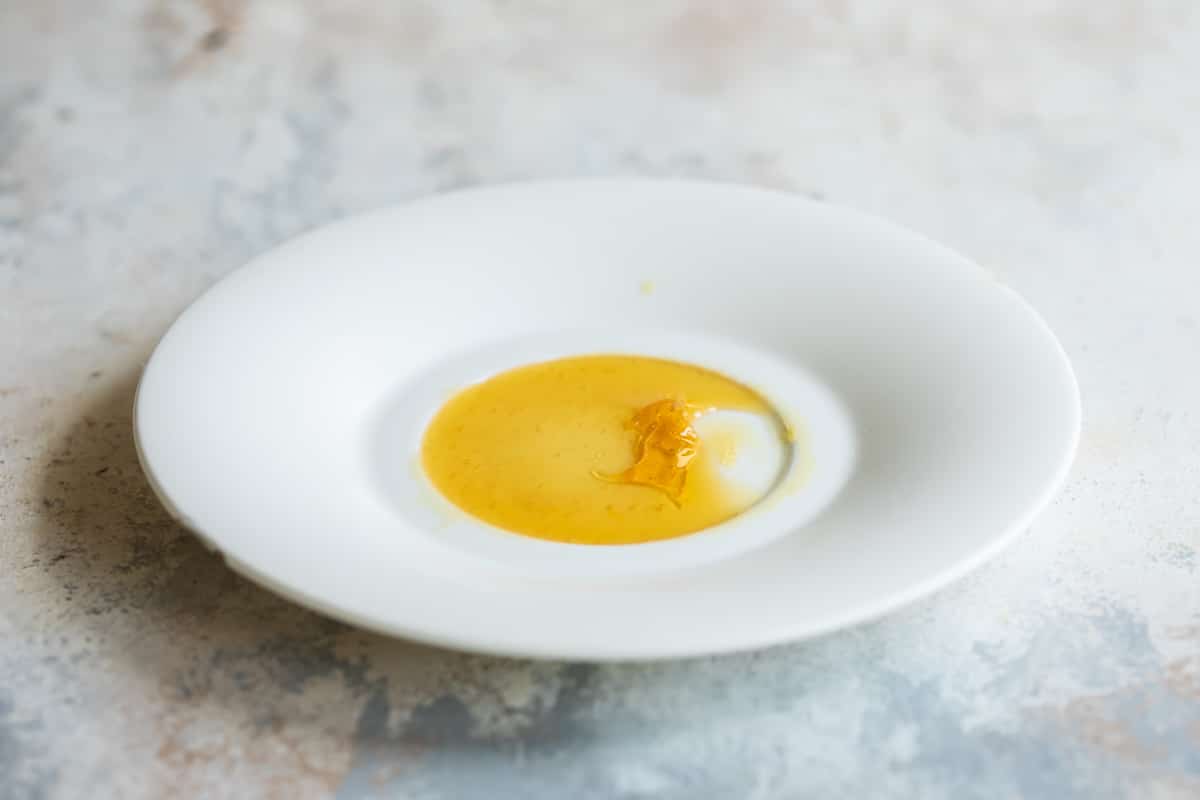
- Pour or ladle the marmalade into clean hot mason jars (I use this wide-mouth jar funnel for this recipe and so many others). Wipe the rims thoroughly with a clean damp paper towel, and seal with the lids. Chill in the refrigerator. It may take 24-48 hours for the natural pectin to set up properly.
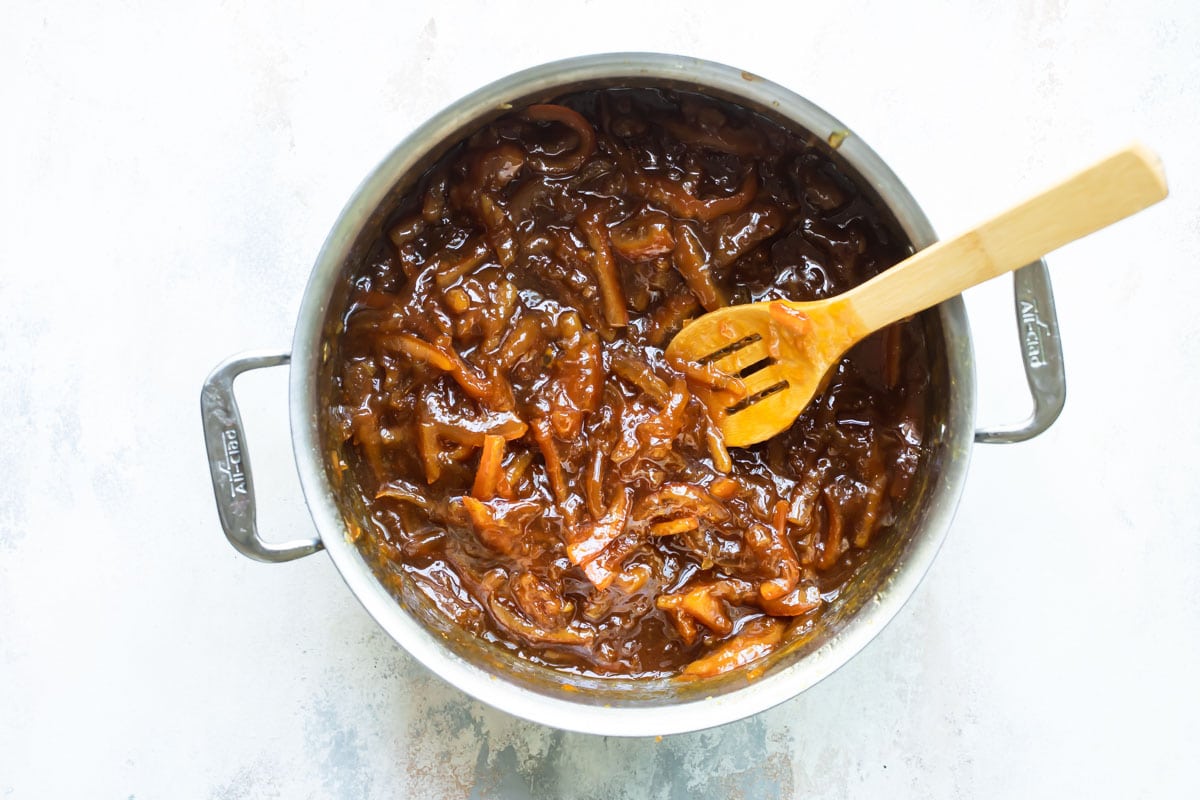
Recipe tips and variations
- Yield: This recipe makes about 3 quarts (96 ounces) of marmalade.
- If using 1/2-pint (8 ounce) jars, you’ll need 12.
- If using 1 pint (16 ounce) jars, you’ll need 6.
- If using the tiny jelly jars (4 ounce), you’ll need 24.
- Storage: Store covered in the refrigerator for up to 1 month.
- Freezer: Pack in freezer-safe containers or jars leaving 1/2-inch of headspace for expansion. Label, date, and freeze for up to 3 months. Thaw overnight in the refrigerator.
- Cold-plate test: To test if your marmalade is ready, spoon some hot marmalade on to a small plate and put it in the freezer to chill, or spoon some over an icy cold plate fresh from the freezer. If the mixture wrinkles slightly when you draw a spoon or finger across it, it has reached the setting point. Your marmalade is ready to go! If not, keep boiling and make sure the temperature reaches 220 degrees.
- Set-up time: Orange marmalade takes 24-48 hours for the natural pectin to set up completely. If your marmalade is still a little runny looking when it cools, check again in a day or two.
- Pectin: While many jam and jelly recipes require added pectin, you don’t need to add any to this marmalade. Pectin is naturally concentrated in the pith of the orange (the bitter white part under the peel). This recipe coaxes out that natural pectin by letting the citrus soak overnight and then boiling it rapidly until enough water has evaporated that the mixture can reach 220 degrees.
- Agave nectar: Agave cannot penetrate and sweeten the peel as well as sugar can. When I tested it, the consistency was fine, but the rind tasted like raw rind. I don’t recommend this substitution.
- Low sugar: I haven’t tested low-sugar/alternative sweeteners in this recipe other than agave as listed above nor have I tweaked the amount of sugar in the recipe. I recommend seeking out recipes from experts in that area.
- Canning: If putting up for storage, use a hot water or steam canner with a rack to properly seal lids on canning jars according to canning instructions. Otherwise, refrigerate and use within the month. Or, freeze for up to 3 months.
- Slow cooker marmalade: While it is technically possible to make marmalade in your slow cooker, it really depends on the power of your appliance. I no longer recommend that method because it isn’t reliable enough.
- Instant pot marmalade: Even with an overnight soak, the IP doesn’t break down the rind sufficiently. I don’t recommend this method.
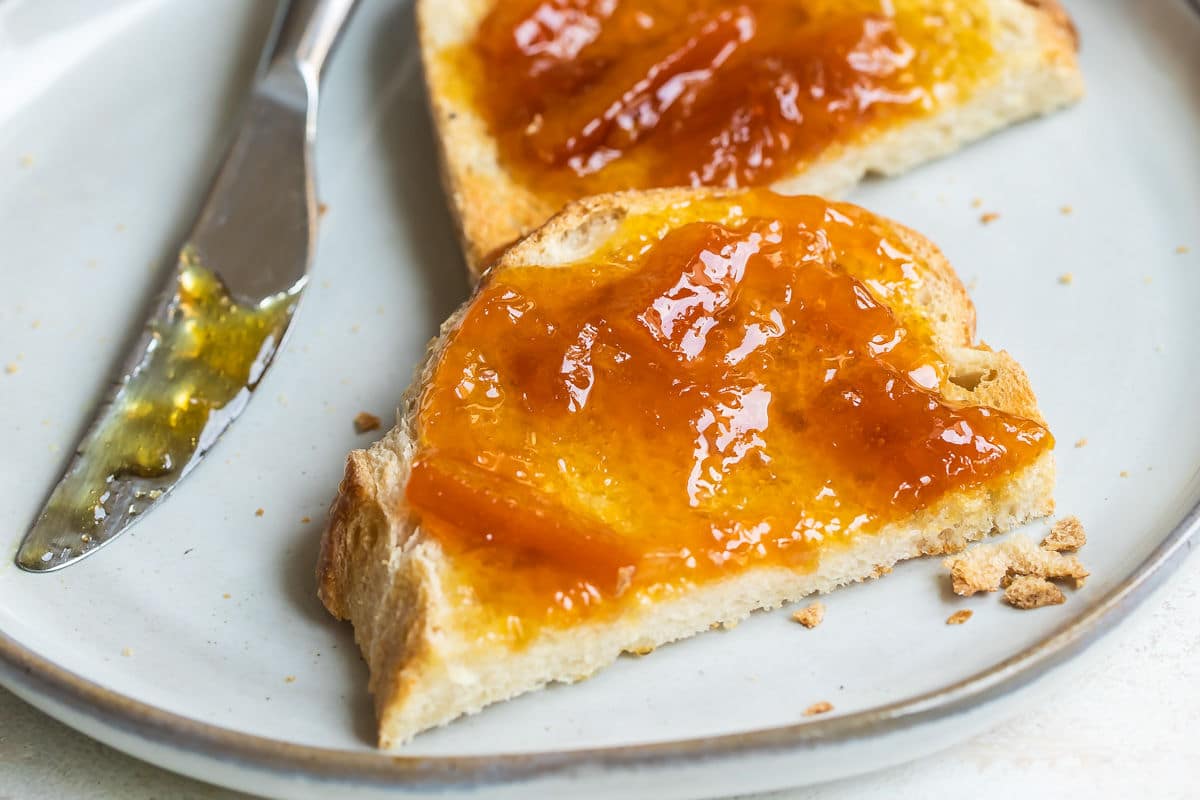
Frequently Asked Questions
Pectin is naturally concentrated in the pith of the orange (the bitter white part under the peel), so you don’t need to add any to this marmalade recipe. This recipe coaxes out that natural pectin by letting the citrus soak overnight and then boiling it rapidly until enough water has evaporated that the mixture can reach 220 degrees.
While it is technically possible to make marmalade in your slow cooker, it really depends on the power of your appliance. I no longer recommend that method because it isn’t reliable enough.
Even with an overnight soak, the IP doesn’t break down the rind sufficiently. I don’t recommend this method.
Agave cannot penetrate and sweeten the peel as well as sugar can. When I tested it, the consistency was fine, but the rind tasted like raw rind. I don’t recommend this substitution.
I don’t recommend making orange marmalade in a regular cast iron pan. It should be made in a non-reactive pan. Enameled cast iron, stainless steel, and non-stick are best and will not affect the color or taste of the marmalade
More fruit recipes
Pie and Tart Recipes
Fresh Fruit Tart
Fruit Dessert Recipes
Strawberry Shortcake
Fruit Dessert Recipes
Apple Crisp
Cake Recipes
Lemon Bundt Cake
Join Us
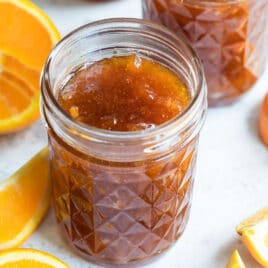
Orange Marmalade
Equipment
- jar funnel (for wide mouth jars)
Ingredients
- 4 large seedless oranges scrubbed clean (about 3 pounds or 8 cups slices, see note 1)
- 2 lemons (about ½ pound or 1 cup slices)
- 8 cups water
- 8 cups granulated sugar
Instructions
- Cut oranges and lemons in half crosswise, then into very thin half-moon slices. Discard any seeds. In a large stainless steel pot, add the sliced oranges, lemons, and any accumulated juices.
- Add water and bring the mixture to a boil, stirring often. Remove from the heat and stir in the sugar until it dissolves. Cover and let stand overnight at room temperature.
- The next day, bring the mixture back to a boil. Reduce heat to low and simmer uncovered for 2 hours. Turn heat up to medium and boil gently, stirring often, for another 30 minutes.
- Skim off any foam that forms on the top. Cook the marmalade until it reaches 220 degrees (you must hit this temperature for the natural pectin to gel with the sugar).
- To test if the marmalade is ready, place a small amount on a plate and refrigerate it until it's cool but not cold (see note 4). If it's firm (neither runny nor hard), it's ready. It will be a golden orange color. If the marmalade is runny, continue cooking it; if it's hard, add a bit more water.
- Pour the marmalade into clean hot mason jars; wipe the rims thoroughly with a clean damp paper towel, and seal with the lids. Chill in the refrigerator. It may take 24-48 hours for the natural pectin to set up properly.
Recipe Video
Notes
- Oranges: This recipe is made with regular seedless oranges. You can definitely substitute Seville oranges if you can find them. They are only in season from the end of January to mid-February, but they have an intense flavor that is ideal for marmalade.
- Yield: This recipe makes about 3 quarts (96 ounces) of marmalade.
- If using 1/2-pint (8 ounce) jars, you’ll need 12.
- If using 1 pint (16 ounce) jars, you’ll need 6.
- If using the tiny jelly jars (4 ounce), you’ll need 24.
- Storage: Store covered in the refrigerator for up to 1 month.
- Cold-plate test: To test if your marmalade is ready, spoon some hot marmalade on to a plate and put it in the freezer to chill, or spoon some over an icy cold plate fresh from the freezer. If the mixture wrinkles slightly when you draw a spoon or finger across it, it has reached the setting point. Your marmalade is ready to go! If not, keep boiling and make sure the temperature reaches 220 degrees.
Nutrition
Meggan Hill is a classically-trained chef and professional writer. Her meticulously-tested recipes and detailed tutorials bring confidence and success to home cooks everywhere. Meggan has been featured on NPR, HuffPost, FoxNews, LA Times, and more.

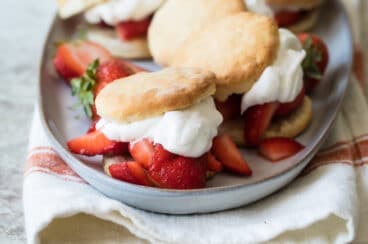
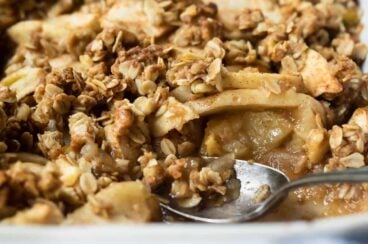
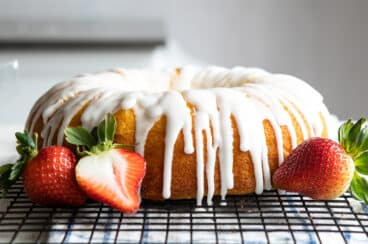
Can the Marmalade be frozen after a couple days in the Fridge, to set?
Looks like a great recipe.
TIA
Yes, the marmalade can absolutely be frozen. Just leave at least an inch of headspace for expansion in the jar. Label, date, and freeze for 3 months (or maybe even longer). Thaw overnight in the refrigerator. – Meggan
Could I substitute Meyer lemons for the oranges and follow the process/ingredients?
Hi Lisa, yes, you can absolutely substitute meyer lemons and follow the same recipe. Meyer lemons also have pectin in the rind which is what works the magic here. – Meggan
Great recipe and certainly worth following entirely. Since my stocks of marmalade are running low, I’m ready for the next batch. I added one sliced chilli which was enough to give the entire batch a gentle yet distinctive spicieness. Delicious! .
Happy to hear you loved it, Sigi! Thank you 🙂 – Meggan
This is an excellent recipe! This was my first time making marmalade and it turned out perfect!
I did use a little less sugar than suggested because 1. I had SUPER sweet oranges and 2. I ran out of sugar 😅. So I used about 6 cups instead of the suggested 8. But it was still plenty sweet and delicious.
I also used my immersion blender toward the end of my boiling/simmering stage and it worked great! Gave me juat the consistency I wanted!
I’m glad to hear it all worked out well 🙂 Thanks for trying my recipe! – Meggan
I’m in the overnight stage of letting it sit, I would like to use and immersion blender to mix it at what phase should I do that? I was thinking before boiling or should it be done at very end?
I have never tried using an immersion blender with this. It sounds like it would probably be fine? Would it break down the rind? I suppose if it’s powerful enough, it would! If I were going to attempt that, I personally would do it at the very end so the rind is as soft as possible. I think that is your best chance for success. I hope it works out for you! I’m curious about this myself now. Thank you and take care! – Meggan
Amazing!!! I have made marmalade twice now using this recipe and both times it has come out great! We prefer a more bitter marmalade, so have tried using less sugar than what the recipe call for (only 5 cups instead of 8) and it works a treat! My new go to marmalade for gifts and for our family.
I love that you are able to tweak it to your taste, Beth! Enjoy – Meggan